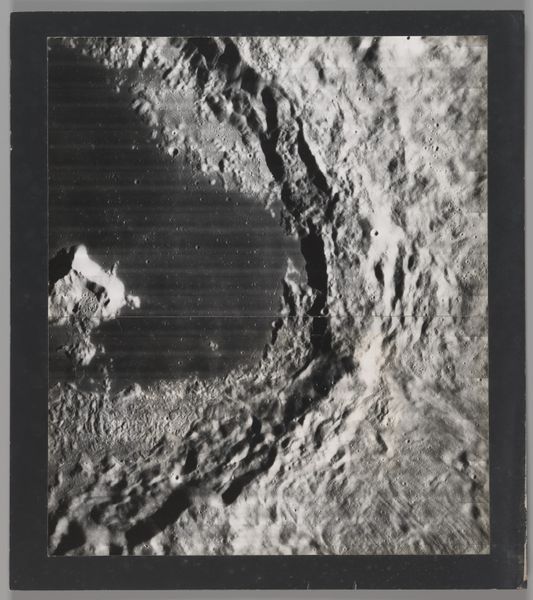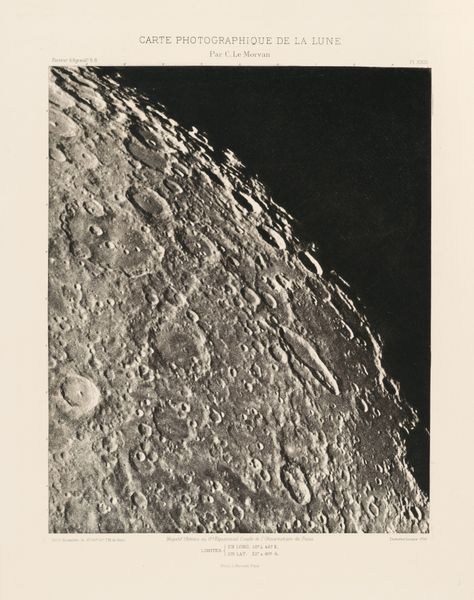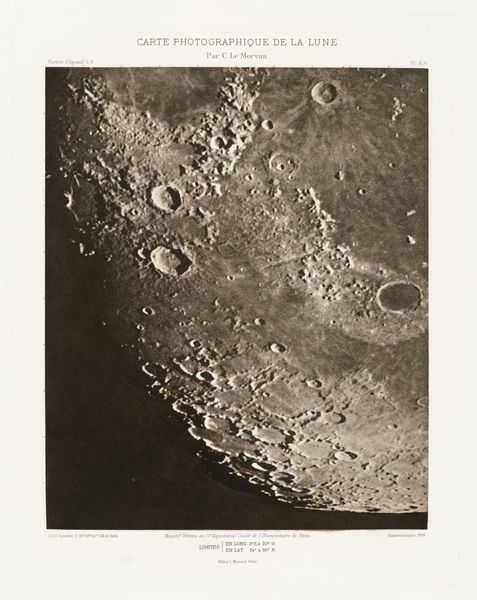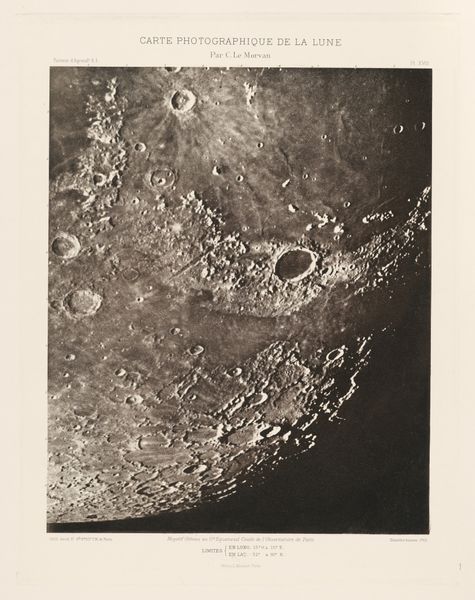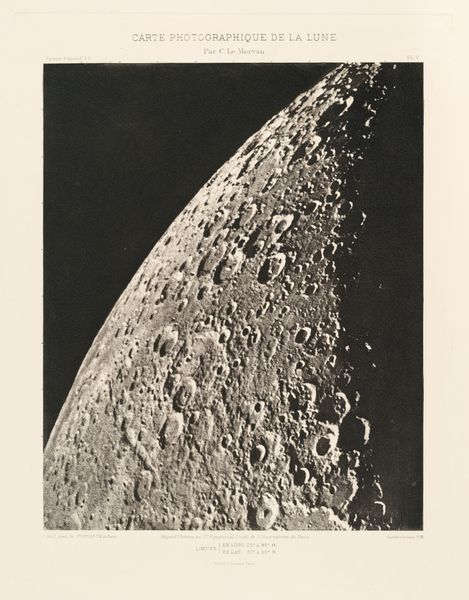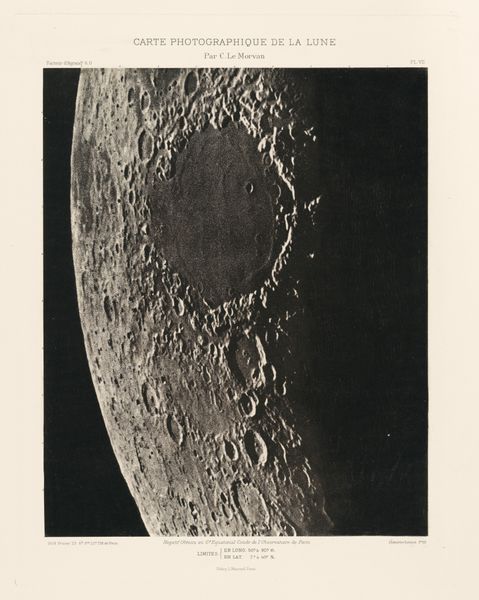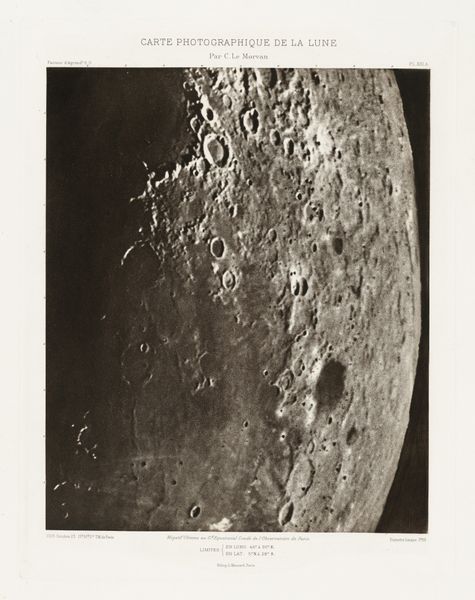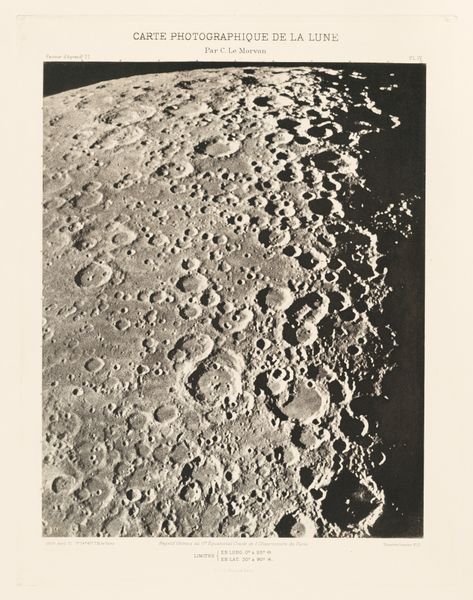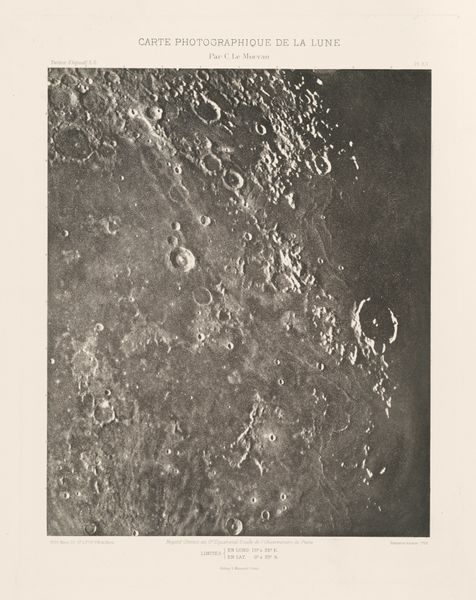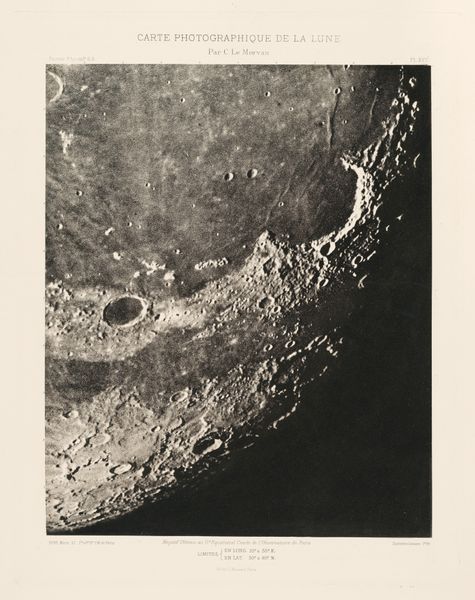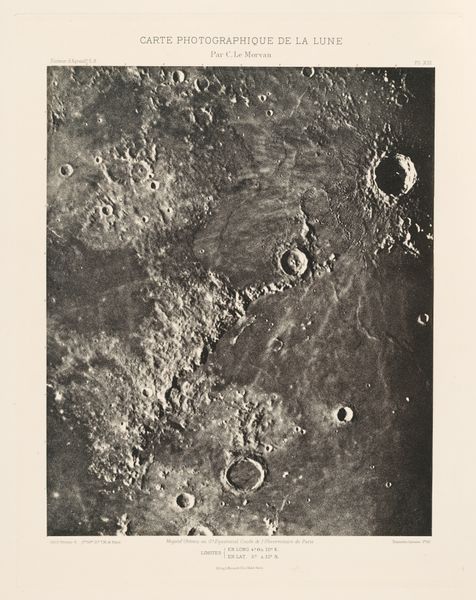
Crater Kepler and Vicinity 1967
0:00
0:00
photography
#
landscape
#
photography
#
realism
Dimensions: Image: 11 7/8 × 13 13/16 in. (30.2 × 35.1 cm) Mount: 16 × 18 in. (40.6 × 45.7 cm)
Copyright: Public Domain
Curator: It’s stark, isn’t it? So alien, yet rendered in shades we’re so familiar with. Editor: Absolutely. What strikes me immediately is the sheer desolation, an almost chilling emptiness. There's a silent grandeur to it. Tell me a bit about the piece. Curator: This photograph, "Crater Kepler and Vicinity," was taken by NASA in 1967. What appears before us is a photographic print from the Metropolitan Museum of Art’s collection. It offers a detailed view of the lunar surface, showcasing the Kepler crater prominently. Editor: Thinking about 1967, at the height of the Space Race, it feels almost like a symbolic battleground – the crater itself a kind of scar or wound. Do you see the act of photographing the moon as inherently political? Curator: Indeed. The image carries immense symbolic weight. Consider that craters are often viewed as sites of impact, literally, but also figuratively, as symbols of major historical events. NASA documenting the moon during this time suggests a claim—a footprint, a desire to understand not only what is, but what happened. A conquest. Editor: And in purely visual terms, it’s striking how abstract and almost graphic the image is, isn't it? It’s realism pushed to an extreme. Curator: Precisely. Light and shadow transform the surface, creating something that evokes older memento mori traditions, the acknowledgement of emptiness that echoes the ephemerality of existence. Editor: I keep returning to this idea of visual and social history converging in this photograph. NASA offered the image up as science and progress, but in a historical lens, it underscores Cold War ambitions. The Soviets were neck-and-neck with NASA! Curator: Which may underscore why that sense of conquering, discovery, and expansion carries such immense symbolic power within the image itself. It's fascinating how photography at that time—much like cartography centuries before—became an assertion of cultural and ideological power. Editor: So, here we have an image that encapsulates technological ambition, cultural anxieties, and enduring symbols of space exploration. It makes you reflect on how photographic images can transcend their initial purpose and evolve to embody deeper meanings and cultural memory. Curator: It certainly offers much to contemplate.
Comments
No comments
Be the first to comment and join the conversation on the ultimate creative platform.
